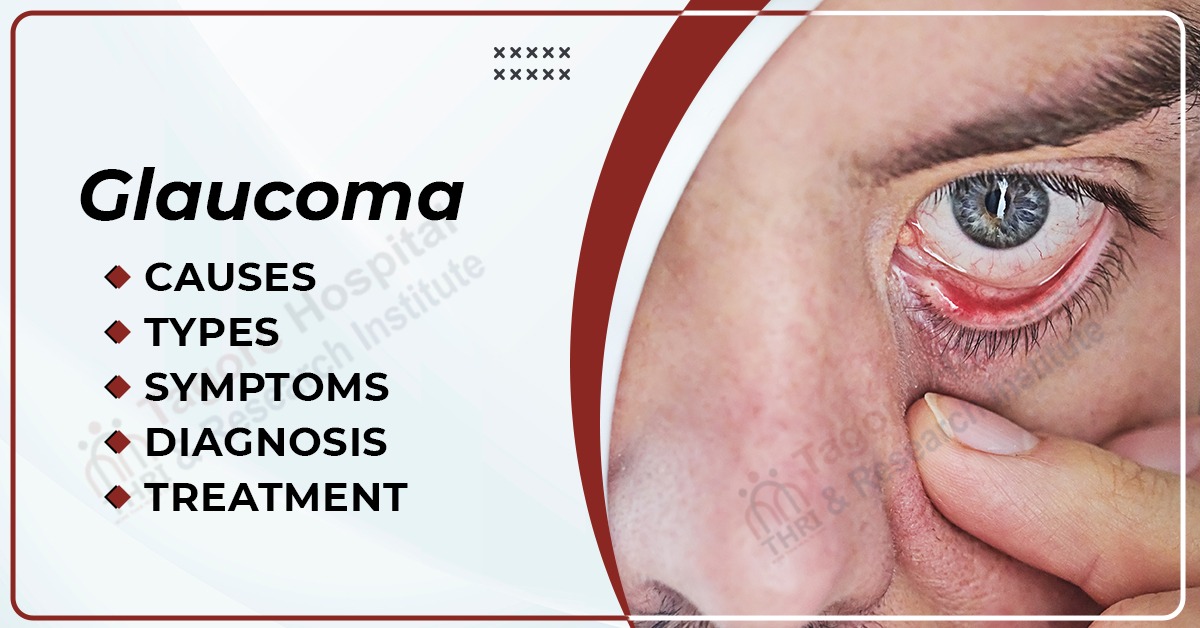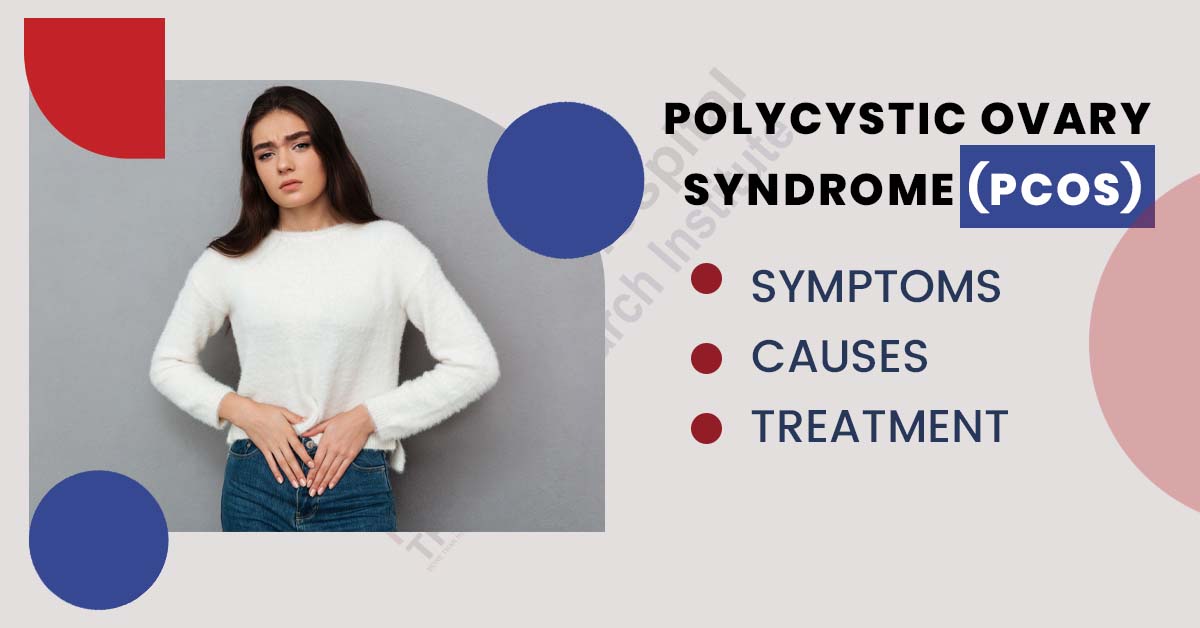- By THRI admin
- Posted May 22, 2023
A condition known as glaucoma causes the fluid pressure inside the eye to increase. It can harm the optic nerve and cause blindness if left untreated. Glaucoma affects a lot of people. The most susceptible are white people over the age of 60, followed by black and Hispanic people over the age of 40.
The symptoms of the most common type of glaucoma, open-angle glaucoma, develop gradually and are subtle. An eye exam, however, can help an ophthalmologist spot changes. The progression of glaucoma can be slowed or stopped with treatment, but there is no known cure.
The causes, signs, and remedies of glaucoma will be examined in this article. We will also go over the various glaucoma types and potential surgical options.
What is glaucoma?
The optic nerve of your eye is harmed by glaucoma, a condition that progressively gets worse. In most cases, it is caused by an increase in eye pressure. A family history of glaucoma is common. It usually takes you until much later in life to acquire it.
The optic nerve that transmits images to your brain may become damaged as a result of increased intraocular pressure in your eye. Glaucoma may within a few years result in total blindness if the damage is severe enough.
What are the types of glaucoma?
Five major types of glaucoma exist. These are:
- Open-Angle (Chronic) Glaucoma
Except for a slow loss of vision, open-angle, or chronic, glaucoma has no visible symptoms. Before any other symptoms appear, this loss could be occurring so gradually that it would permanently harm your vision. The National Eye Institute (NEI) reports that this is the most prevalent form of glaucoma.
- Angle-Closure (Acute) Glaucoma
Your body may experience a severe, abrupt, and painful rise in pressure if the flow of your aqueous humor fluid is suddenly blocked. The condition of angle-closure glaucoma is critical. If symptoms like severe pain, nausea, or blurred vision appear, you should immediately contact your doctor.
A defect in the angle of the eye in congenital glaucoma patients causes a delay or obstruction in the normal drainage of fluid. Cloudy eyes, excessive crying, or sensitivity to light are some of the symptoms of congenital glaucoma that are frequently present. A family may be predisposed to congenital glaucoma.
Secondary glaucoma frequently develops due to an eye disorder like cataracts or tumors or as a side effect of an injury. This kind of glaucoma can also be brought on by medications like corticosteroids. Secondary glaucoma following eye surgery is extremely uncommon.
Optic nerve damage can occasionally occur in individuals with normal eye pressure. Unknown factors may be to blame. The cause of this type of glaucoma, however, could be due to extreme sensitivity or poor blood flow to your optic nerve.
What are the causes of glaucoma?
Glaucoma may develop without apparent cause, but a variety of factors can influence it. In terms of these variables, intraocular eye pressure is the most important. Aqueous humor, the substance that hydrates and nourishes your eyes, is produced. The fluid enters the front of your eye through your pupil. The drainage canals that are situated between your iris and cornea allow fluid to exit a healthy eye.
Your drainage canals become more resistant when you have glaucoma. The fluid accumulates in your eye because it has nowhere else to go. There is an excess of fluid in your eye that puts pressure on it. Glaucoma is caused by an increase in eye pressure that harms your optic nerve.
What are the symptoms of glaucoma?
The symptoms of the two types of glaucoma that are most prevalent vary.
Primary open-angle glaucoma:
- The gradual loss of peripheral vision, which typically affects both eyes, is characterized by the emergence of patchy blind spots.
- Tunnel vision in advanced stages is a defining feature.
Acute angle-closure glaucoma:
- Eye pain that might come with nausea and vomiting
- The visual disturbance that appears suddenly
- Blurred vision
- Lights are surrounded by halos, also known as crowns or auras.
- Increasing eye redness
- A terrible headache.
Until irreversible damage has already been done, primary open-angle glaucoma shows few symptoms. Regular eye exams are crucial to detecting glaucoma early enough to effectively treat it and stop its spread.
Read also: Amaurosis Fugax: Symptoms, Treatments, And Diagnosis
How is glaucoma diagnosed?
Combining several tests allows for the diagnosis of glaucoma. These examinations are quick, easy, and painless. For glaucoma diagnosis, the following tests are used:
- Angle exam: This procedure, also known as gonioscopy, examines the angle formed by your cornea and iris. If the test finds a closed angle, the drainage system of your eye is clogged.
- Corneal thickness measurement: This test analyses the thickness of your cornea to estimate your risk of glaucoma.
- Dilated eye exam: It is necessary to dilate your pupils with eye drops before performing this test. An optical tool magnifies the optic nerve and retina at the back of the eye. Afterward, your ophthalmologist can examine your optic nerve and retina, including their shape, size, color, and blood vessels, for any damage.
- Eye pressure check: This test involves touching your eye and flattening the cornea with a little tool, which then measures the pressure.
- Optic nerve imaging: This examination uses a unique digital camera to take photos of your optic nerve and retina. This test can also be performed using an optical coherence tomography machine.
- Visual field test: This test determines the severity of your glaucoma by deciding if you have lost vision in specific locations. Doctors may use equipment such as automated static perimetry to do the exam. You may need to examine a line pattern and report any areas that appear blank or hazy.
- Blood sugar test: Whether you have glaucoma symptoms but don't know what's causing them, your doctor may examine your blood sugar levels to see whether you have diabetes, which could be causing your glaucoma.
- Haemoglobin electrophoresis: Assume your glaucoma is caused by sickle cell anemia. Then, your doctor may use a blood test called hemoglobin electrophoresis to see if you are a carrier of a certain sickle cell trait.
What is the treatment for glaucoma?
The type of glaucoma you have will greatly affect how you are treated. Treatment for primary open-angle glaucoma, the most prevalent type, typically involves eye drops. If drops are ineffective, laser therapy or surgery may be recommended. Treatment for glaucoma includes:
For glaucoma treatment, either medications or eye drops are used. It is recommended to use eye drops between once and four times daily. Even though you haven't noticed any vision issues, you must use them as instructed. If you do not stick with or adhere to the prescribed treatment, your eyesight is in danger.
When eye drops do not work or improve your symptoms, laser treatment is indicated. A high-energy beam of light is carefully directed towards a region of your eye to prevent fluid from accumulating inside it. There are several laser treatments available, including:
- Laser Trabeculoplasty: In this therapy, the eye surgeon utilizes a laser to improve the drainage angle. As a result, fluid flows properly out of the eye, lowering ocular pressure.
- Cyclodiode Laser Treatment: In this treatment, an ophthalmologist uses a laser to reduce the discharge of a fluid called aqueous humor from the eye.
- Laser Iridotomy: The ophthalmologist uses a laser beam to make a tiny hole in the iris during this therapy. This hole allows fluid to travel to the drainage system.
When medications and laser treatment are ineffective, surgery is considered. Glaucoma surgery most commonly involves trabeculectomy. It entails removing a portion of the eye-drainage tubes to facilitate fluid drainage. Glaucoma surgery can also be performed under local anesthesia, which means while you're awake, or under general anesthesia, which means while you're unconscious.
Read also: Depression: Symptoms, Causes, Risk Factors & Treatment
Tags





